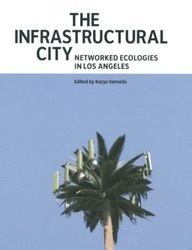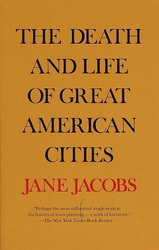2) Another question I had while initially reading Whose City? Whose Culture? was how do globalism and America’s “Melting Pot” mentality affect this role of Cultural Identity? Later on in the reading this issue is gently touched upon, and ultimately culminates with a quote from Patrick Buchanan addressing how ‘we’ must take back our cities and ‘we’ must take back our culture. The title of the reading then struck me all at once and the reading finally began came together. In our current state of being, everything is becoming more and more of a hybrid and less of a singular identity due to advances in technology and accessibility, in addition to a more open-minded society. While a debate could easily be brought to the table on the advantages and disadvantages of each side, I believe a more significant discussion would be on the matter of how to exploit this fact to its fullest potential, seeing as how it is clearly happening regardless of the benefits/consequences. Given that these globalistic ideals are rapidly taking over, how are we currently handling the idea of ‘cultural consumption?’ Is it simply enough for cities to have China Towns and Little Italy’s? Or is there more than can be taken into consideration from the ever-growing diversity and density on our planet today?
3) Lastly, given some of our past class discussions I could not help but to take note of the reading’s mentioning of how in the 60’s urban shopping centers began to copy suburban shopping malls by “developing a clean space according to a visually coherent theme.” With Arthur’s re-occurring argument that suburban malls are now always mimicking urban environments, do we begin to see a sort of cyclical process in how we desire spaces to be? The reading then goes on to mention how at that time urban shopping began to take on a role of ‘cultural entertainment’ in order to attract the previously mentioned ‘cultural consumers.’ I could not help but to wonder if this was the beginning of cities starting to become these ‘drive-thru’ destinations where consumers would constantly be coming and going, but never staying to contribute heavily to the urban well-being. While it is true that recently we have reciprocated back to the majority of the world’s population living in cities, I feel as if that is heavily swayed by denser third world countries, while American cities are still suffering drastically. What can be done to rejuvenate the idea of a city in America? Is it possible to make American cities a destination with the notion of consumption being the city’s primary role?
4) The Cultural Roles of Cities reading was one that was significantly challenging and confusing to comprehend. A main concept that I was attempting to grasp was their notion of city’s of Orthorenetic Transformation vs. Heterogenetic Transformation. While I attempted to create several examples in my head, I continued to find conflicting characteristics no matter what city I thought of and therefore was unsure of the exact meaning behind the two. From my understanding Orthogenetic cities have traits of historical influence as well as being cities of culture, which I ultimately decided would be most similar to European cities; whereas Heterogenetic cities tend to be current and globalized cities, which I thought to be more closely to related to cities such as New York and/or Tokyo, Shanghai, Beijing and the like. Are these conclusions accurate? If so, I cannot help but to notice tendencies of each type. For example, Orthogenetic tend to be heavily focused around tourism/consumption, where are Heterogenetic tend to be heavily reliant upon societal aspects. What do these observations mean?
5) Another thought sparked from the Cultural Role of Cities reading was derived from the discussion of Primary Urbanization and Secondary Urbanization. Again, I was a little unclear of exactly which each consisted of; however I believe the topic of City and Country is directly related, with Primary corresponding to Country and Secondary with City. This being the case, though, I believe the authors are missing a primary tertiary factor: Suburbs. The reading alluded to the fact that there is an inevitable gap between City culture and Country culture and left it at that. However, I think now that gap has been filled with this third vision of culture being the suburbs. What does this 3rd realm mean? Now that it is not necessarily just the peasant and the literari, how has our society changed? I think this middle ground of the suburbs creates an entirely different relationship, being that it is not longer about 2 extremes correlating. In our Forces that Shape Cities class we discussed a reading that said how nothing it necessarily created in cities, but rather it “centralizes creation,” implying that cities are essentially middlemen. Which is a more appropriate analogy, the city as a middleman or the suburbs as a middleman?


















